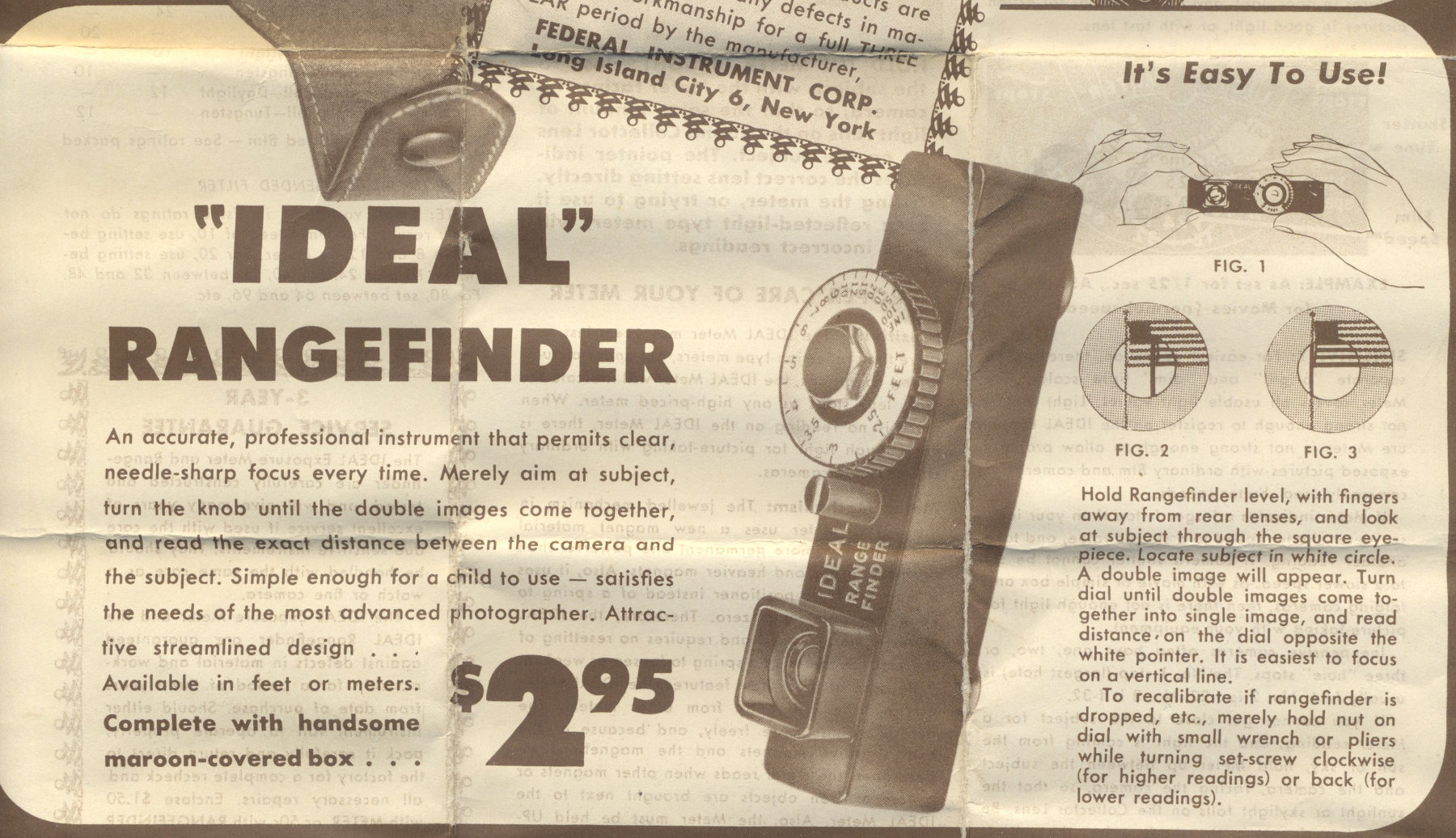

The M11's headline feature is a 60MP BSI CMOS sensor, featuring. The Pupille is a 3×4cm rigid camera made in the 1930s by Nagel, later Kodak AG. It makes 16 exposures on 127 film, has a big helical mount holding the lens and shutter assembly, and a folding optical finder. The lens and shutter combinations included: The Hugo Meyer rangefinder is found on many Speed Graphics. It was offered as an alternative to the more common Kalart rangefinder on both civilian andmilitary models. Cooke Anastigmat 2inch 50mm f:3.5 with Compur 300.Schneider Xenar 5cm f:3.5 with Compur 300.Schneider Xenon 4.5cm f:2 with Compur 300.These rangefinders can be identified by their oblong windows, Kalart rangefinders all have round windows. Pupille with Elmar lens and accessory rangefinder. HUGO MEYER POCKET Rangefinder, With Case And Mountable Shoe, Issue/215475 - 43.02. The Pupille has two small holes on the top plate, mainly used to plug an external rangefinder made by Leitz, similar to that of the Leica Standard. At least two types were available one is the Megoflex by Hugo Meyer, also made for other cameras the other is pictured above and was made by an unknown manufacturer, perhaps Nagel itself.Īccessory reflex finders were also made, transforming the camera into some sort of TLR. Hugo Meyer Rangefinders were made for one focal length only.

The Nagel Ranca was a less expensive version of the Pupille, with front-cell focusing and cheaper lens and shutter combinations. They will adjust for the production focal length variation for that focal length.pocket knife accounting careers gatlinburg lodging colorectal cancer schoolar casino bonus This wiki runs on version.
Hugo meyer pocket rangefinder code#
There is a code on the base side of the rangefinder for the focal length it is for.

Even the Polaroid 110b conversion I primarily use on a tripod, well stopped down. This is primarily for images requiring great detail rather than a "decisive moment" sort of look. It's the difference between fiddling around for several minutes on a dim screen while the scene and subject change, or locking in and getting the shot relatively quickly. These cameras are meant to be used on a tripod, and the rangefinders are more of a double check to achieve focus quickly, fine tune on the ground glass, and then go. The rangefinder base on the Tech III, IV, V and Master is huge and built to deal with 360mm lenses with a fair degree of accuracy. The 50mm F6.3 makes me hesitate, but I feel the 75mm will compensate well enough.Ī Technika is not a Leica.
Hugo meyer pocket rangefinder upgrade#
To upgrade to the Tech V, I would sell my Mamiya Super 23 system (which has the rare Graflok back, Horseman holders, and the 50mm f6.3). There are a few issues with this: can the Tech II accomidate the HUGE Copal 3 of the Arton (my Tech III has problems with it), allow accurate rangefinder focusing, and will it allow use of the 75mm SW Nikkor? Extensive modification sort of will ruin any sort of savings. The Tech II has a Hugo Meyer Rangefinder, which may make the switch feasible, as I would have the Rangefinder adjusted for the 360mm lens only, as it is most important there. I've considered selling the Tech III and either upgrading to a Tech V, or downgrading to an available Tech II (converted to 4x5 international). The range-finder would need to be accurate at 1 meter, focused on the eyes. I intend to use the Arton for portraits on a Tripod at about 1 meter away, and also for more serious scenes.

Recently, I also acquired the 360mm Tele-Arton, which I've been excited to use in a faster format with the Rangefinder on the Technika III, but having the scales and cams made is cost prohibitive, and I know I could sell the III and upgrade to the V for the cost of having this done. The 110b is superior for speed and agility on a tripod. I have been using a 4x5 converted Polaroid 110b and Technika III camera in tandem for a few years, but have found that the Tech III is redundant as a Rangefinder camera, and really only useful in ground glass-focusing mode (shifting, tiltig, composing on the ground glass, etc, where the range-finder is really a minor point).


 0 kommentar(er)
0 kommentar(er)
